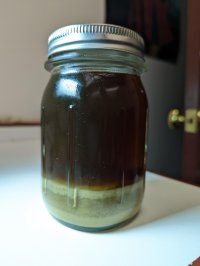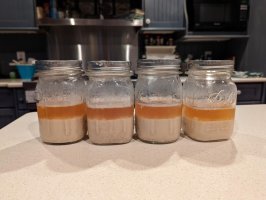dmaxweb
Well-Known Member
I fermented a porter using US-05 and some Fullers strain I had. I harvested the yeast from the secondary just in case. We'll, the porter turned out great. After letting the slurry settle in a gallon jug, I decanted all but 2 pints. There are three layers in the jars. Since Fullers is very flocculant while US-05 is only medium, am I seeing the Fullers yeast on the bottom, a layer of trub and the US-05 on top?







